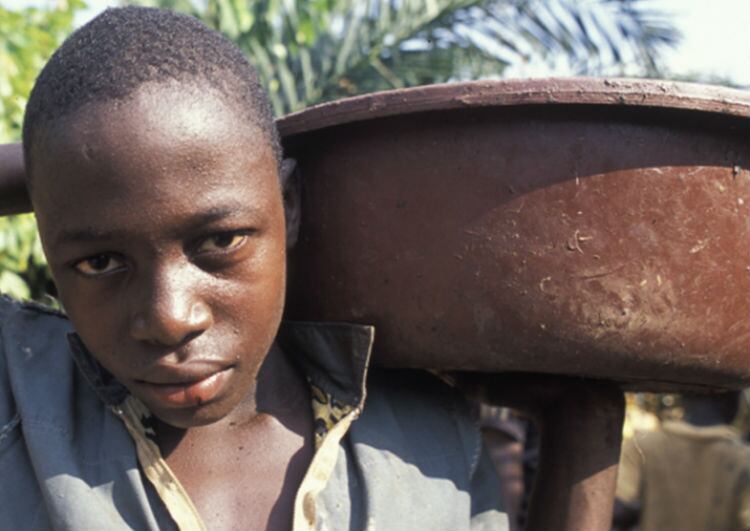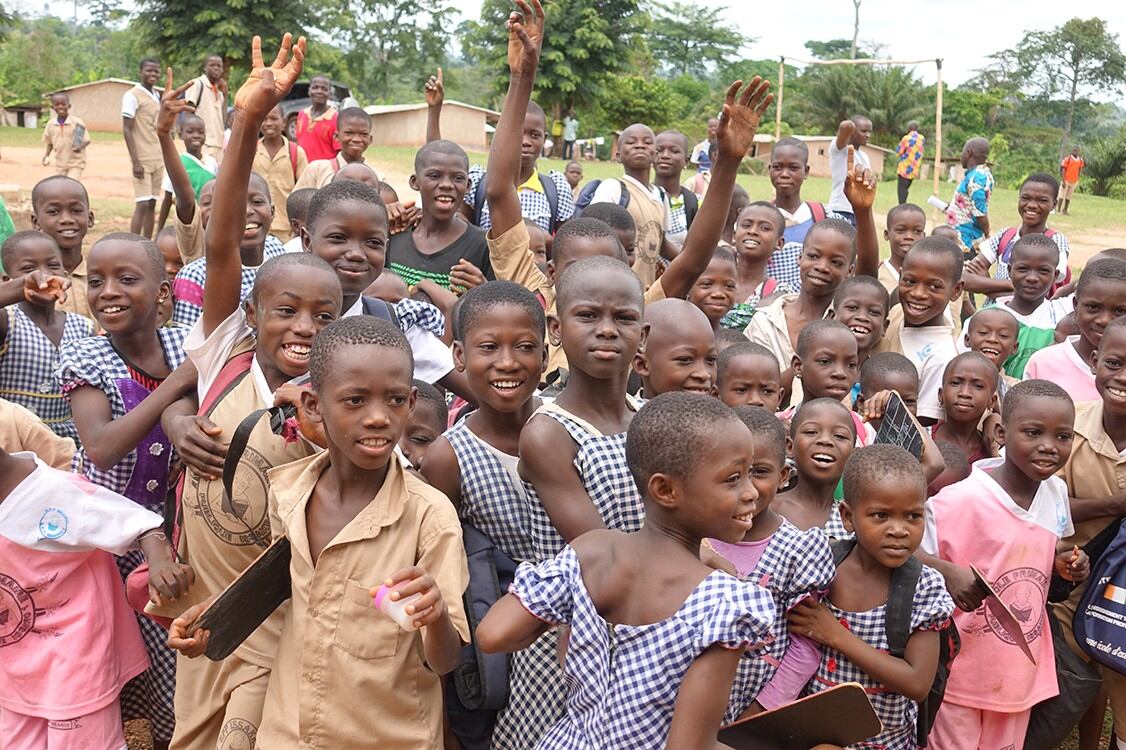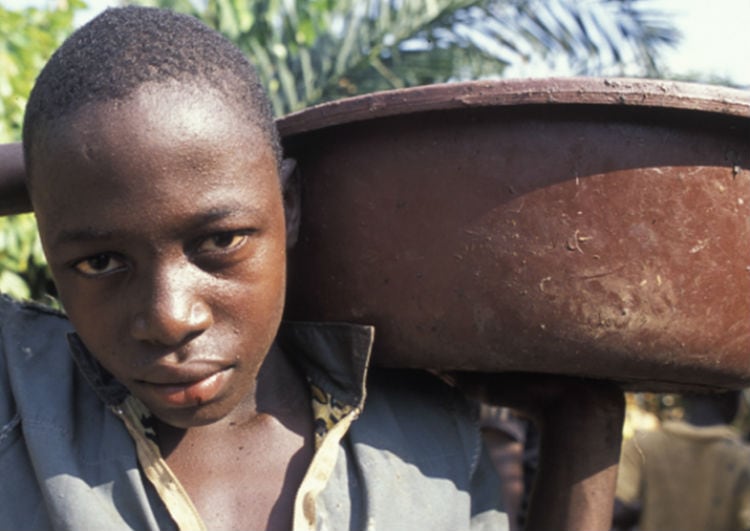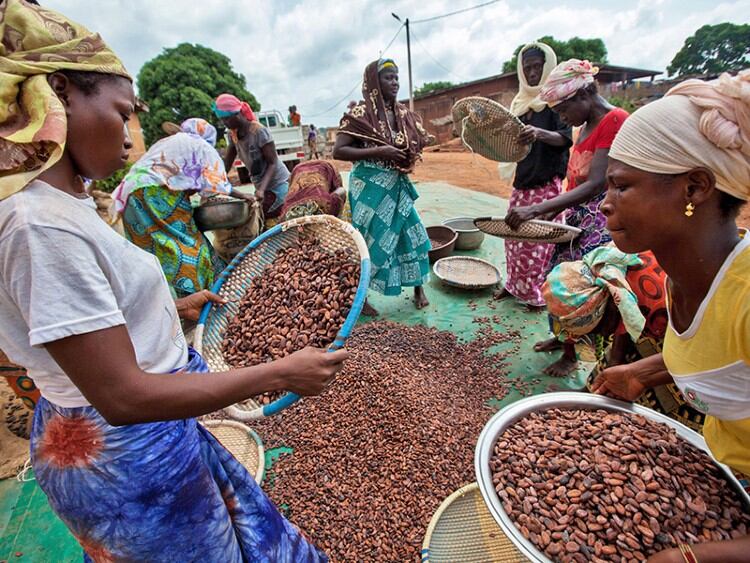The findings will come as a blow to the industry that has spent an estimated $215m in combating child labor in recent years in its attempts to tackle the problem.
It means that level of child labor in some cocoa growing regions is now higher than in 2010 when many of the big chocolate companies pledged to reduce the worst forms in their West African supply chains by 70% by 2020.
Pressure on cocoa and chocolate companies
When it is released the report is likely to add to the pressure on cocoa and chocolate companies, who are already under the scrutiny of EU and US lawmakers for failing to eradicate child labor from their supply chains.
The National Opinion Research Center (NORC) at the University of Chicago has completed a draft of its study, which ConfectioneryNews has seen, and its main findings indicate that the prevalence rate of children in child labor (proportion of children age 5-17 in child labor) in cocoa production in agricultural households in cocoa growing areas of Côte d’Ivoire and Ghana increased between the 2008/09 and 2018/19 survey rounds (from 31% in 2008/09 to 44% in 2018/19) as did the prevalence rate of children involved in hazardous child labor in the cocoa sector between 2008/09 and 2018/19 (from 30% in 2008/09 to 41% in 2018/19).
While there is progress, it is clear this progress is not fast enough and governments, industry, civil society and cocoa-growing communities now need a more transformative approach to make sure today’s generation of children are freed from labor on cocoa farms -- Richard Scobey, World Cocoa Foundation president
NORC said it conducted ‘a sectorally representative survey during the 2018/19 cocoa harvest season in cocoa growing areas of Côte d’Ivoire and Ghana in order to develop population estimates for the prevalence of working children, child labor and hazardous child labor in those regions’.
Over the same 10-year time period, cocoa production across Côte d’Ivoire and Ghana, increased from 1.89 million tons in 2008/09 to over 3 million tons in 2018/19.
According to the report, the global price of cocoa over the same time period increased from $2,263 USD/ton to $2,626 USD/ton.
The increase in proportion of agricultural households involved in cocoa production also rose from 58% in 2008/09 to 83% in 2018/19 in Côte d’Ivoire and Ghana.
“Contextually, the prevalence rate of child labor in cocoa production and hazardous child labor in the cocoa sector increased by a greater extent within areas of low and medium cocoa production where there may not have been as much government, industry, and non-governmental organization (NGO) investment to address child labor,” the report stated.
This may indicate that, with an increased importance of cocoa production, and as cocoa farming expands in areas where child labor interventions were not very extensive, child labor rates saw significant increases.
Another finding contained in the report reveals that while the prevalence of hazardous child labor in cocoa production among children in all agricultural households increased between the 2008/09 and 2018/19 survey rounds, comparison of data on cocoa growing households between the 2013/14 and 2018/19 rounds “paints a different picture”.
During this time period (2013/14 – 2018/19) the report’s data shows that the prevalence rate of children’s exposure to hazardous work in cocoa production remained stable although production during this period increased 14% in aggregate across Côte d’Ivoire and Ghana.
“This may indicate the success of increased interventions and a heightened priority given to reducing child labor in the cocoa sector of Côte d’Ivoire and Ghana by national, international, and the international chocolate and cocoa industry (Industry) stakeholders in recent years,” the report claimed.
Cocoa premiums
Cacao for Change founder Fernando Morales-de la Cruz has been campaigning for several years for cocoa premiums (the extra amount levied by organizations such as Fairtrade and some private companies that goes direct to farmers to provide more financial support) to be much higher if the industry wants to alleviate poverty, which is the main cause of child labor.
“Five years ago people thought I was crazy when I said child labor is increasing, and some bigshots in the industry called me a liar … well I’m very sorry this report proves child labor has increased – and what’s more they also knew it, because their own reports prove it, so who is the liar now?”
The big companies have been claiming for decades they are going to eradicate child labor, and now they have managed to increase it, Morales-de la Cruz told ConfectioneryNews.
“The price of cocoa is now cheaper in real terms, so if you pay less for cocoa how can you say you are eradicating poverty,” he claimed.
He said he feels sad that his predictions have been found to be correct, ”I wish I had been wrong,” he said. As a simple solution to combat child labor, Cacao for Change has been calling for the price of a chocolate bar to increase by 10 cents to provide cocoa farmers with a living income.
Harkin-Engle Protocol
While the target of the Harkin-Engle Declaration and Famework to reduce the worst forms of child labor in the cocoa sector by 70% between 2008/09 and 2018/19 was not met, the study said “it is worthwhile to consider this finding in the context of the growth in cocoa production, which increased 62% during the 10-year assessment period.”
Statement from the WCF
In a statement to ConfectioneryNews, and other media, World Cocoa Foundation president Richard Scobey said: “It is premature to discuss the findings of a draft report that is still under review by the governments of the United States, Côte d’Ivoire and Ghana, the cocoa and chocolate industry, and technical partners such as UNICEF and the International Labor Organization.
“When the report is completed, we look forward to a robust public discussion of the findings and the lessons learned to accelerate our efforts to eliminate child labor in the supply chain.”
Scobey also made the point that it is important to remember that this planned report is about child labor in Côte d’Ivoire and Ghana and not about forced child labor or child slavery in those countries, which other studies show is extremely rare in the cocoa sector and for which the industry is mainstreaming targeted approaches.
“Child labor has no place in the cocoa supply chain and data over the past few years has already indicated that child labor is a persistent challenge in Côte d’Ivoire and Ghana, despite extensive efforts by the governments, industry, and development partners,” he said.
He told ConfectioneryNews that the goal for a 70% reduction in the worst forms of child labor by 2020 was set without fully understanding the complexity and scale of a challenge heavily associated with poverty in rural Africa.
“While there is progress, it is clear this progress is not fast enough and governments, industry, civil society and cocoa-growing communities now need a more transformative approach to make sure today’s generation of children are freed from labor on cocoa farms,” he said.
While most of the big chocolate companies are not commenting on the report, at least until it is published, a spokesperson for Barry Callebaut, one of the world’s largest cocoa suppliers, told ConfectioneryNews it will also wait until the report has been validated, but said in general: “Barry Callebaut has a commitment to make sustainable chocolate the norm by 2025, which includes a commitment to eradicate child labor from our supply chain by 2025 and to lift over 500,000 cocoa farmers out of poverty. And we report annually on the progress we are making against these commitments.”
Conclusion
The report’s authors concluded that child labor in cocoa production is “a complex problem requiring multiple complementary solutions.”
Another important takeaway from the report are the successes on the ground in confronting child labor and hazardous child labor by both national and international stakeholders.
“Although the goals of the Harkin-Engle Protocol were not met, we do see an impact on child labor in areas with high production and multiple interventions. While assessment results suggest that sustained efforts to fight child labor are successful, it is important to understand what types and combinations of interventions that are more effective in reducing child labor and hazardous child labor and how effectiveness may vary under different local conditions,” it concluded.




